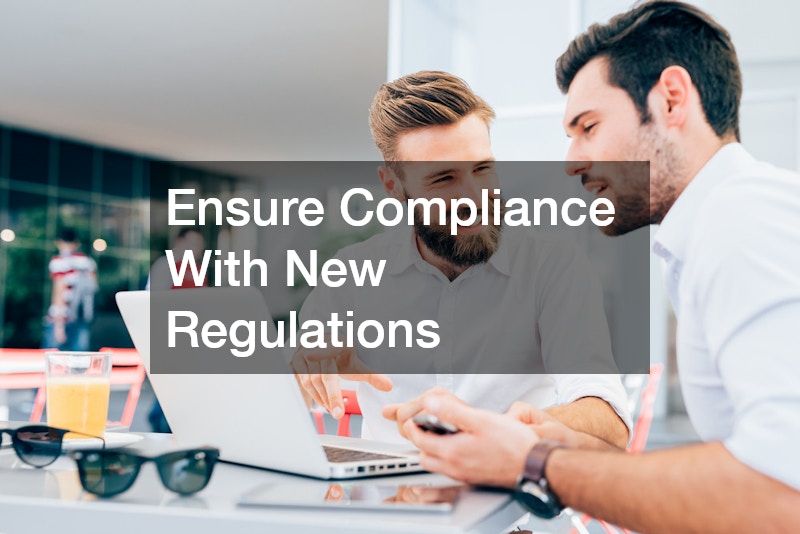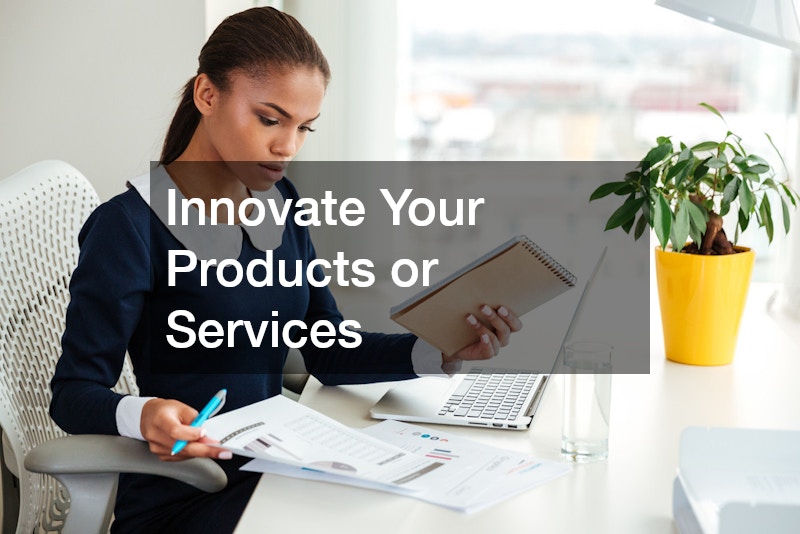In the fast-paced world of commerce, businesses must remain agile, innovative, and responsive to both opportunities and challenges in order to achieve sustained success. This adaptability is vital not just in times of crisis but also as a standard approach to ensure growth and longevity. Each business is unique, presenting a distinct set of circumstances that require tailored strategies aimed at advancing operational efficiency, enhancing customer satisfaction, and fostering a competitive edge.
Every commercial enterprise, whether it’s a local pest control service or a commercial HVAC company, must consistently assess and improve its offerings. The journey towards long-term success requires an in-depth understanding of market dynamics and a proactive stance in implementing changes that resonate with consumers and stakeholders alike. By exploring essential strategies for keeping a commercial business updated, leaders can cultivate an environment that thrives on innovation and adaptability.
This article will delve into key actions your organization can take, emphasizing the significance of regular reassessment, brand refresh, technology upgrades, and more. A strategic approach to each of these areas can significantly impact your company’s trajectory, leading to enhanced performance and profitability. As we explore each strategy in detail, consider how these can be tailored to fit the specific business role your organization plays in its industry.

Reevaluate Your Business Plan Regularly
Your business plan is the blueprint for your company’s growth and direction. Over time, market conditions shift, consumer preferences evolve, and unexpected challenges arise; thus, regular reevaluation is critical. Assessing your business role in the context of these changes can help identify whether your current strategies are still relevant or if adjustments are necessary to meet new demands.
A successful reevaluation process involves engaging key stakeholders, including employees and customers, to gather insights that can inform changes. Their feedback can highlight areas needing improvement or innovation, ensuring that your business plan remains aligned with market expectations. By prioritizing this collaborative approach, you empower your team, fostering a sense of ownership in the company’s direction and success.
Furthermore, an updated business plan should incorporate measurable goals and specific, actionable steps to achieve them. This approach not only clarifies the company’s objectives but also serves to motivate and align the efforts of all team members with the organization’s vision. This dynamic planning process reinforces the business role your organization plays, ensuring you maintain a competitive advantage.
Refresh Your Brand and Customer Experience
Brand perception significantly influences customer loyalty and market presence. Over time, even the most established brands can become outdated if they fail to evolve with the changing landscape. Regularly refreshing your brand identity—including your logo, marketing materials, and online presence—can reconnect you with existing customers and attract new ones.
Moreover, the customer experience is integral to brand loyalty. Investing in training for employees to ensure they can uphold your brand values and provide exceptional service aids in differentiating your business. As commercial furniture dealers, for example, you can create inviting physical retail spaces that reflect your refreshed brand while also enhancing the shopping experience.
In today’s digital landscape, your online presence is a critical component of brand experience. Ensure your website is user-friendly, visually appealing, and optimized for search engines to enhance visibility. By continually evaluating customer interactions, whether through a local pest control service app or an online platform, you can identify pain points and areas for improvement, therefore enhancing the customer experience.

Upgrade Technology and Digital Tools
Technology plays a pivotal role in enhancing operational efficiency and customer satisfaction. Upgrading digital tools to streamline operations reduces costs and improves service delivery. For a commercial HVAC company, for example, implementing a modern customer relationship management (CRM) system can enhance tracking capabilities for service requests and maintenance schedules.
Additionally, adopting emerging technologies, such as automation or artificial intelligence, can provide valuable insights into customer behavior, optimizing marketing efforts and operational strategies. The integration of commercial soap making equipment in production processes can also lead to increased efficiency and product innovation. Businesses that proactively embrace tech advancements position themselves as leaders in their industry.
Furthermore, ensuring that your internal systems—from inventory management to employee collaboration tools—are up to date is crucial. This fosters a more productive work environment and improves team morale. As businesses continually prioritize their business role, those adopting the latest technologies will likely outperform competitors who do not.
Update Your Facility and Work Environment
The physical workspace significantly impacts employee productivity and morale. Regularly updating your facility can create a more welcoming and efficient work environment. For companies such as a chain link fence company, an organized and appealing area can enhance the operational workflow and improve safety standards.
Additionally, a well-maintained environment conveys professionalism to clients and stakeholders. Investing in aesthetics, such as modern decor or comfortable furnishings, can reshape client perceptions. For commercial cleaning services, maintaining a pristine workspace sends a message about the importance of quality and care in your business role.
Moreover, incorporating sustainable practices in your facility updates, such as energy-efficient HVAC systems or waste reduction strategies, can align your business with modern environmental standards. This not only enhances sustainability but can also lead to significant cost savings over time. By creating an engaging and safe workplace, you contribute to your overall brand identity while complying with various workplace regulations.

Ensure Compliance With New Regulations
Every industry faces evolving regulatory environments that demand compliance to mitigate risks and liabilities. Staying up-to-date on relevant laws and regulations is vital for any business, as non-compliance can result in heavy fines and damage to your reputation. It’s essential to incorporate compliance into your business strategy, ensuring that your business role aligns with these legal requirements.
Regularly training employees on compliance topics related to their roles, especially in areas such as health and safety, can cultivate a culture of awareness and accountability. This approach helps minimize the risk of infractions and fosters an environment where everyone understands the importance of adhering to regulations. Moreover, leveraging technology can aid in monitoring compliance, as tools can alert your team about necessary updates.
Additionally, consulting with legal experts or industry professionals ensures that your business practices reflect current requirements. Whether it’s handling hazardous materials or adhering to labor laws, having an expert on your team or as an advisor can foster proactive compliance management. By taking these steps, you protect your business’s integrity and contribute positively to your industry.
Adapt to Changes in Consumer Behavior
Consumer behavior is continually evolving, influenced by various factors including technological advancements, societal changes, and economic conditions. Understanding these shifts is essential for businesses looking to remain relevant and maintain their competitive edge. For instance, trends shifting toward sustainability can impact how businesses, such as commercial roof repair companies, market their services.
Regularly surveying and analyzing customer feedback can provide insights into changing preferences and expectations. This data allows for timely adjustments in marketing strategies or product offerings, ensuring they align with your audience’s needs. By tailoring your approach to adapt to these behaviors, you uphold the business role of being responsive and customer-centric.
Furthermore, leveraging digital platforms for engagement can deepen understanding of your consumer base. Social media analytics and website traffic reports highlight customer interests and interactions, offering real-time insights into their behavior. By remaining agile and responsive, you can pivot your strategies effectively, addressing market demands while maintaining customer loyalty.

Innovate Your Products or Services
Innovation is integral to staying competitive in today’s marketplace. Regardless of industry, whether you’re offering commercial soap making equipment or local pest control services, adapting and evolving your products or services is necessary to meet consumer demands. A culture of continual improvement fosters creativity and enables businesses to push the boundaries of their offerings.
Creating avenues for innovation involves involving employees in the brainstorming process, as a diverse set of perspectives can yield unique ideas. Setting up cross-departmental teams can facilitate collaboration and enrich the ideation process. By allowing various segments of your business to contribute their insights, you strengthen the overall business role each employee plays.
Moreover, staying ahead of industry trends and analyzing competitors can inspire new features or services. If a plumbing company notices increased demand for environmentally friendly fixtures, they can innovate by offering green alternatives. Regularly exploring what’s possible ensures that your offerings remain fresh, relevant, and compelling to your customer base.
Evaluate Sustainability Practices
The focus on environmental sustainability continues to grow among consumers and businesses alike. Implementing sustainable practices not only appeals to eco-conscious customers but can also reduce operational costs in the long run. As commercial glass door repairs become increasingly common due to environmental concerns, integrating sustainable materials and processes can help reinforce your business role as a responsible operator in your field.
Conducting an audit of current sustainability practices can reveal opportunities for improvement and innovation. This might include implementing recycling programs, reducing waste, or utilizing energy-efficient equipment. By aligning company operations with sustainability goals, businesses can differentiate themselves in a crowded market, appealing to customers who prioritize eco-friendly options.
Moreover, communicating your commitment to sustainability can bolster your brand reputation. Consumers are more likely to engage with brands that showcase environmental responsibility. By embedding sustainable practices throughout your business model, you not only enhance your brand loyalty but also take meaningful steps toward a sustainable future.
Revisit Your Business Location and Expansion Plans
The location of your business can greatly affect its operational success. Revisiting where you do business is essential, especially as demographics shift and areas evolve. Whether considering a new site for a commercial asphalt paving company or strategically planning expansions for a local pest control service, examining current and potential geographic markets is crucial.
Your business role within various communities can differ dramatically, so understanding local market conditions and consumer needs is fundamental. A thorough analysis can provide insights into whether your current facility sufficiently meets demand or if new opportunities exist elsewhere. A well-researched decision regarding location can lead to increased profitability and operational efficiency.
Moreover, considering additional facilities or partnerships can leverage existing successes. Businesses can explore a broader footprint, potentially incorporating various service offerings under one umbrella. This strategic planning can position your business to better serve diverse communities, enhancing your overall business role and impact.
Monitor Competitors and Industry Trends
Awareness of competitors and market trends is critical to identifying opportunities and potential threats. Keeping an eye on what others in your field are doing can not only provide insight into successful benchmarks but also reveal gaps in your own strategy. Regularly conducting competitive analysis helps ensure that your business role remains impactful and relevant in your industry.
Directly analyzing competitor strategies can inform adjustments in your practices. For example, spotting emerging trends within the commercial roofing industry might push your firm to innovate faster or focus on service quality. Being proactive in monitoring competitors can place you ahead in the game, encouraging continuous improvement and adaptability within your organization.
Additionally, attending industry conferences or networking events can heighten your awareness of upcoming trends and techniques. Engaging with peers and thought leaders fosters collaboration and inspiration that transcends individual business roles, encouraging a collective push towards innovation. By staying informed and agile, businesses can shape their strategies proactively rather than reactively.
Ultimately, the strategies highlighted in this article underscore the necessity for businesses to be resilient and responsive. Regularly reevaluating your business model, refreshing your brand, upgrading technology, and ensuring compliance with regulations form the cornerstones of a successful long-term strategy. As consumer behaviors shift and sustainability becomes more paramount, companies must continually seek out innovative solutions to stay ahead.
Each aspect, from adapting to industry changes to revisiting location strategies, plays a critical role in solidifying your business’s presence and influence. By fostering an organizational culture focused on agility and innovation, any commercial entity can enhance its overall effectiveness and appeal. Remember that aligning with the core business role and continuously monitoring industry trends ultimately serves as a foundation for sustainable growth.
In the complex landscape of commercial enterprise, a strategic and adaptive approach to management will pave the way for success. As you reflect on these strategies, consider how specific tactics can be applied to your unique business challenges and opportunities. Embrace the journey of refinement and innovation as your pathway to enduring success.




